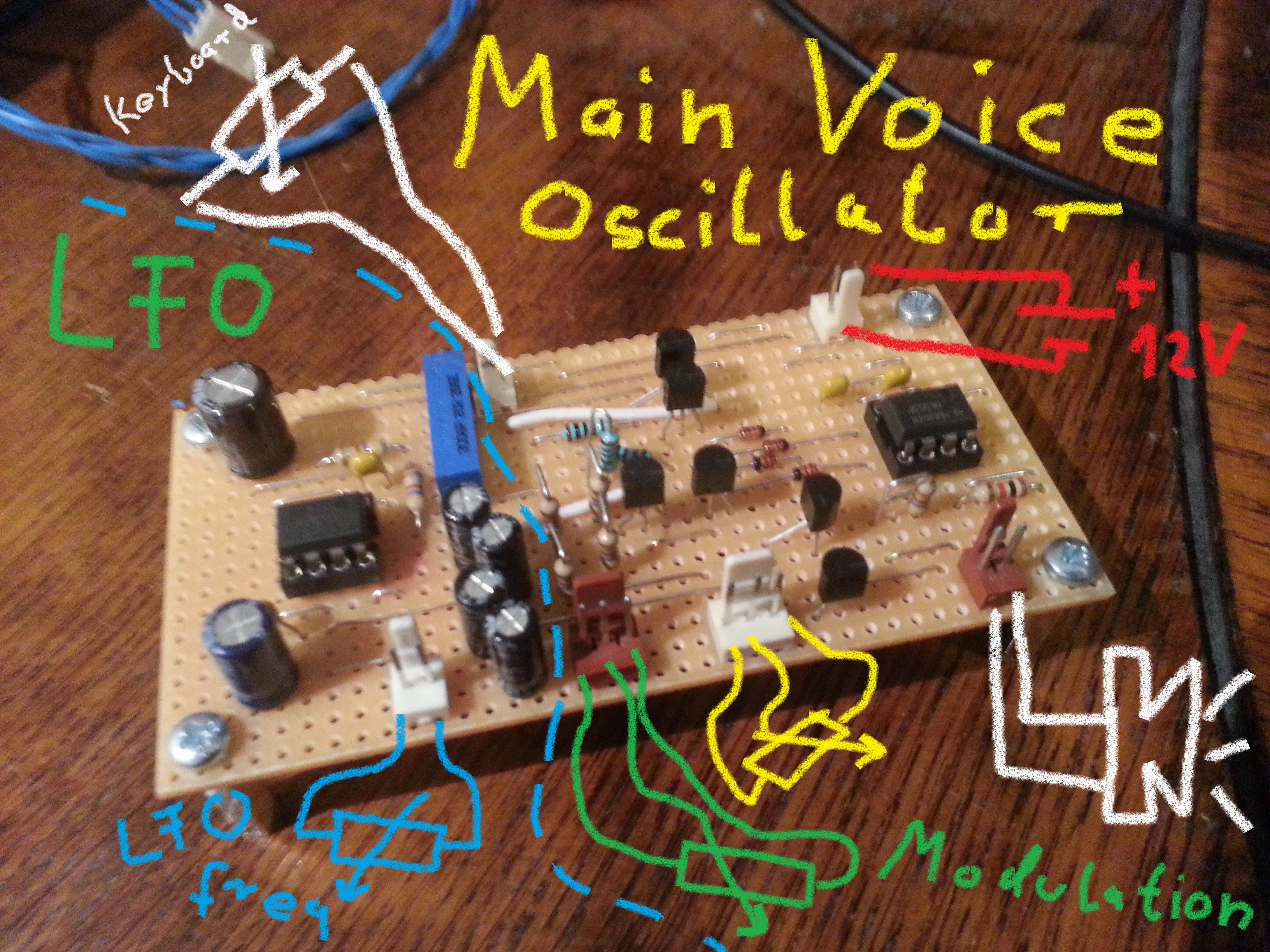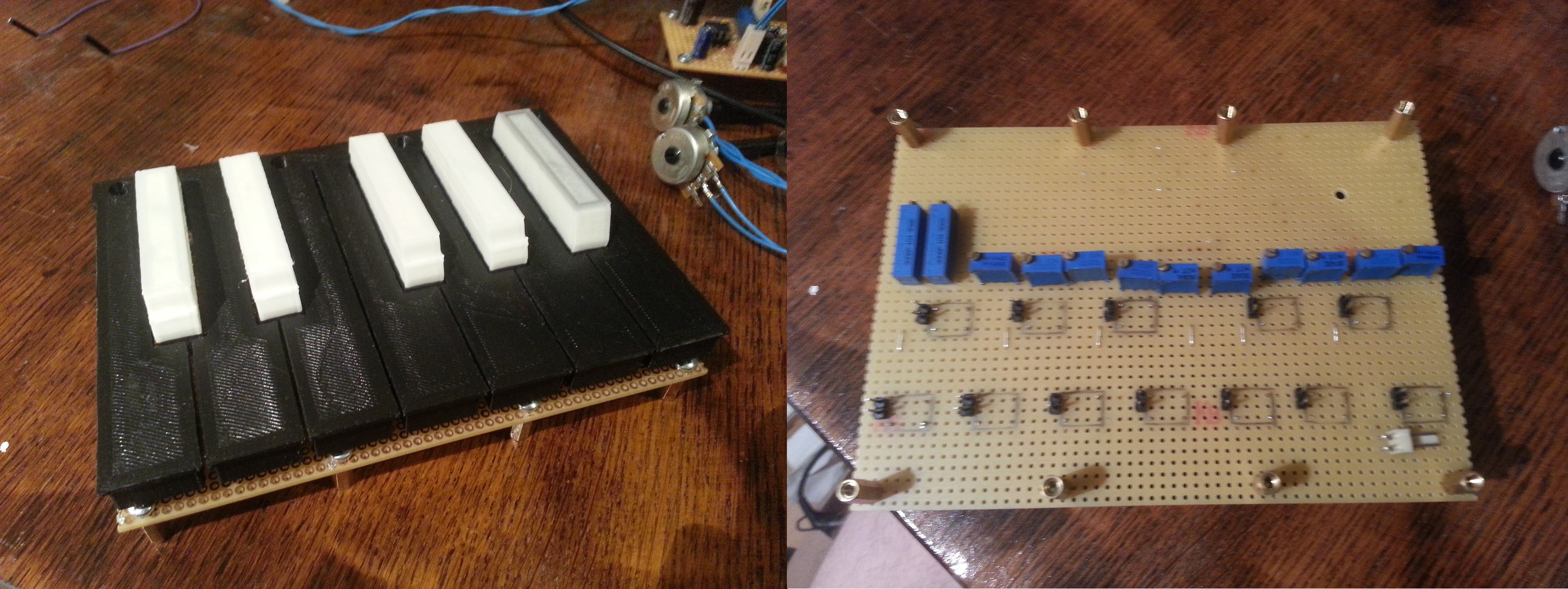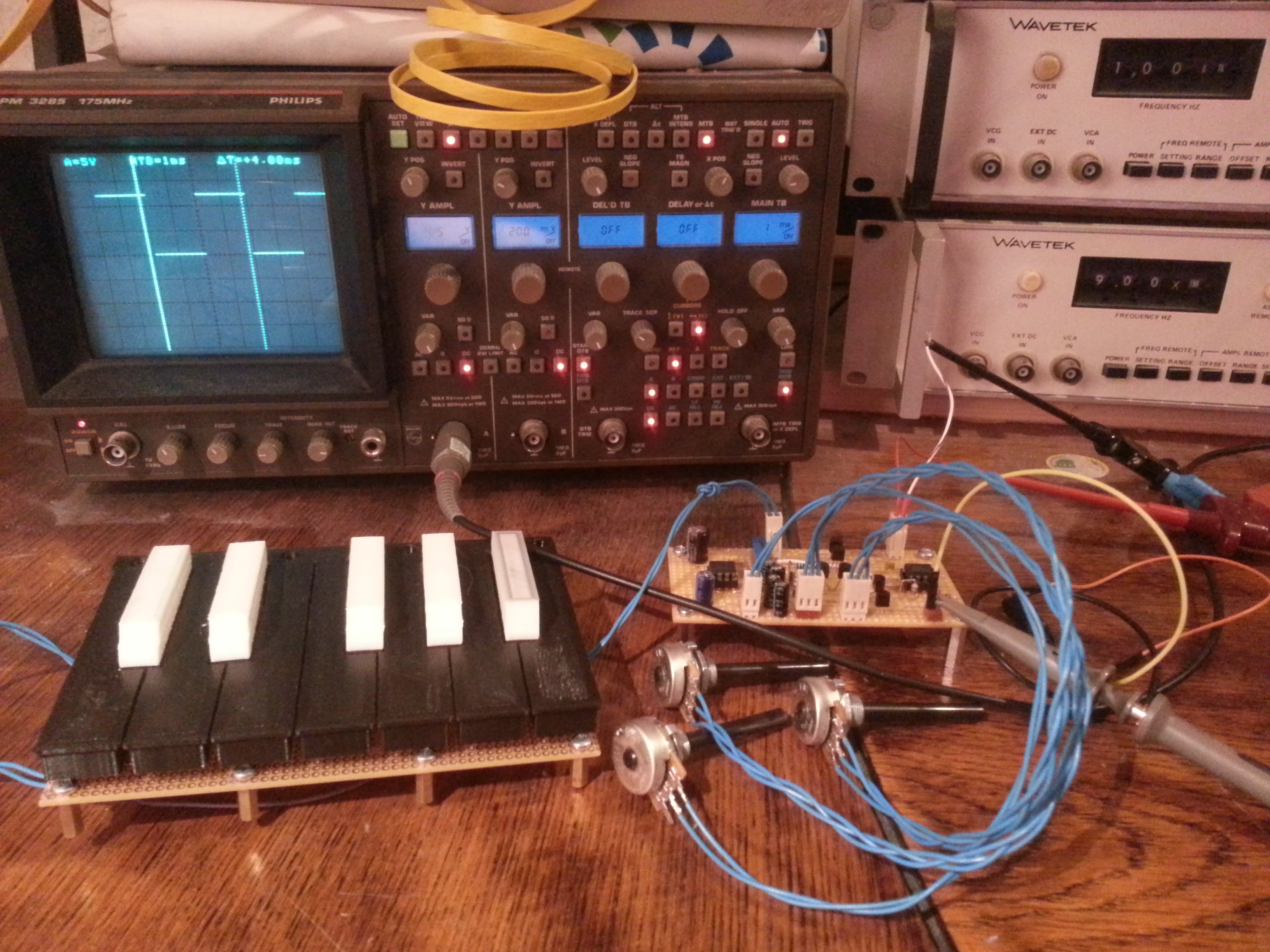Finally some progress on this project. After all these simulations it is time for some real (working) hardware. Enjoy this highly technical drawing:

This board contains all circuitry which is shown in the main voice oscillator testbench (Oscillator, LFO & BiasTee). And beside some changed component values and added bypass capacitors, it's the same schematic. Changes were only necessary because i couldn't be bothered to stand up and fetch the right value. So 480Ohm + 480Ohm = 1kOhm it is.
Keyboard
To get some sound out of this thing i need a keyboard. The schematic is basically a bunch of resistors in parallel which can be selected by the puch of a button.

So i built a keyboard out of tact switches...... ok calm down. I know this is normally a bad thing. But in my case i put some levers in form of a keyboard over it. It still feels like tact switches. But you can hit a key without looking and feel your way around the keyboard, which i think is the feature most missed on normal tact switch keyboards. The result is actually quite nice to play.

The levers are 3D printed in one piece and mounted on a pcb over the switches. The half tone keys are printed separately and cliped on the levers. The resistors are potentiometers so i can trim each tone. Each switch can be shorted by a jumper. So when i trim the tone, i don't have to press the key down and have my hands free.
This is just one octave, but you can add additional octaves. The 3D printed parts fit seamless together. And all switches are simply connected in parallel. There is no limitation to the length, except money (neither sense nore usefullness or the human listening capability)
You can find the .stl files and a board layout in the project files if you want to build your own.
Testing the Main Voice Oscillator
I connected everything and tested the circuit. It worked on first try, no debugging required. No build errors and the function was confirmed by simulation. As a small demo you can see the rectangular wave on the scope. Frequency modulation works as well.

Unfortunately now i have to trim the keyboard. For that i need a frquency counter. I could do it with the scope, but it's not the best tool when you need an precise measurement. Besides that i have a frequency counter but it is broken, because of cause it is. So i probably fix that first.
 Timo
Timo
Discussions
Become a Hackaday.io Member
Create an account to leave a comment. Already have an account? Log In.